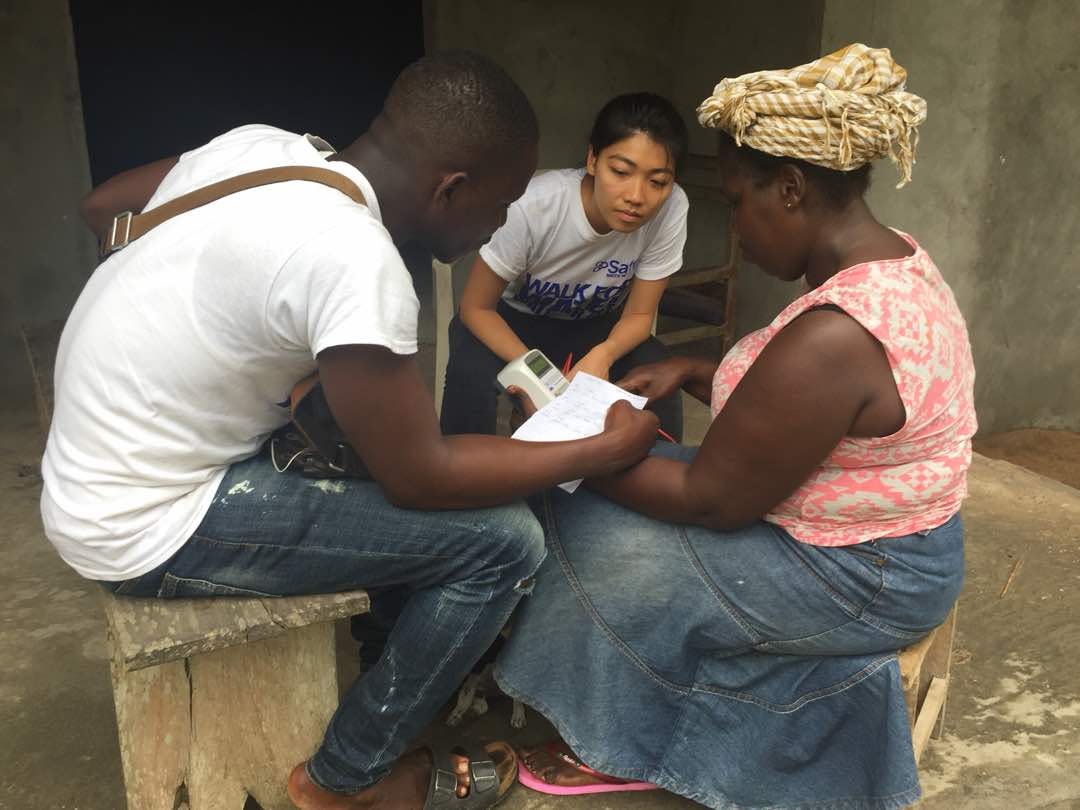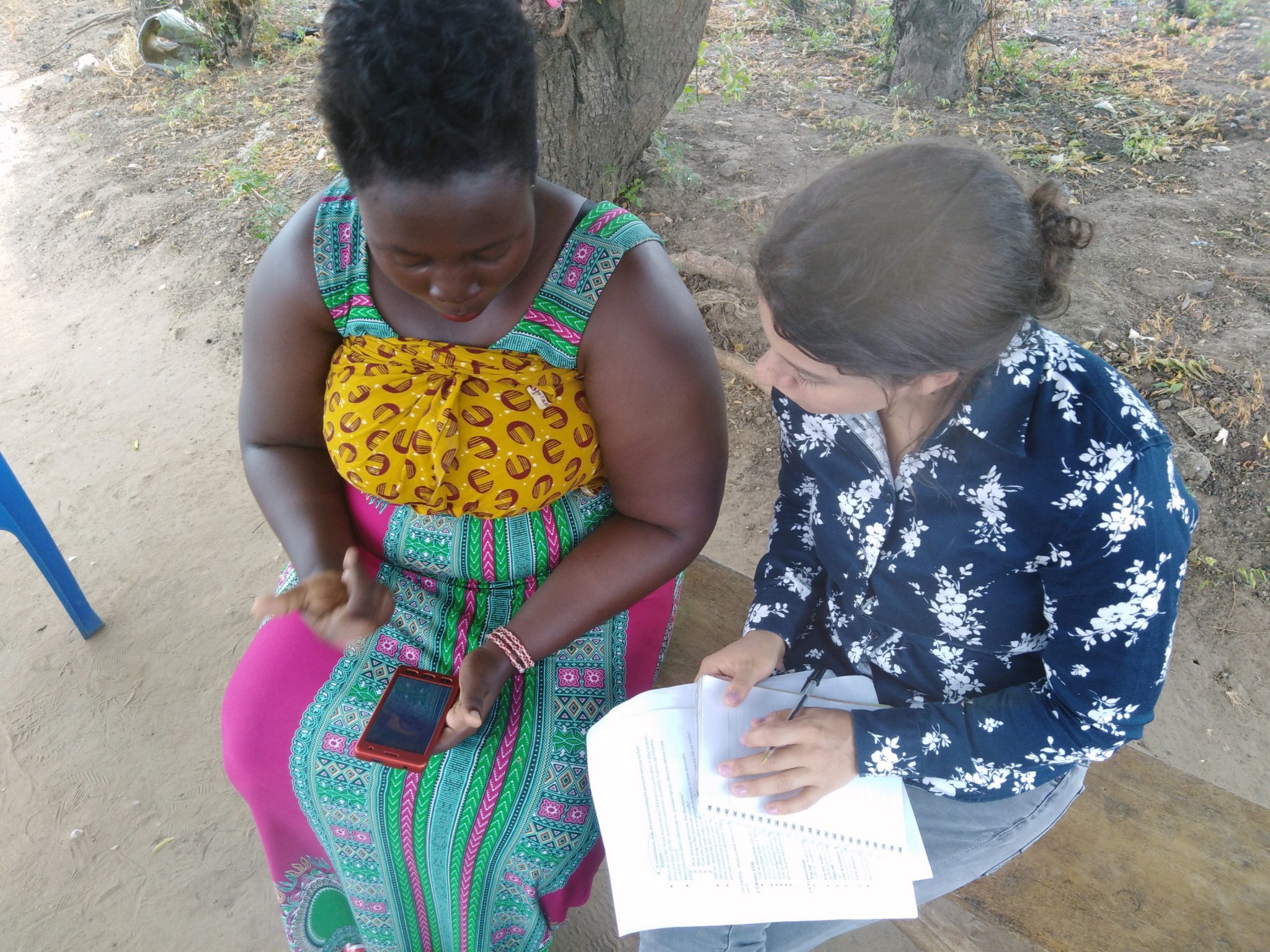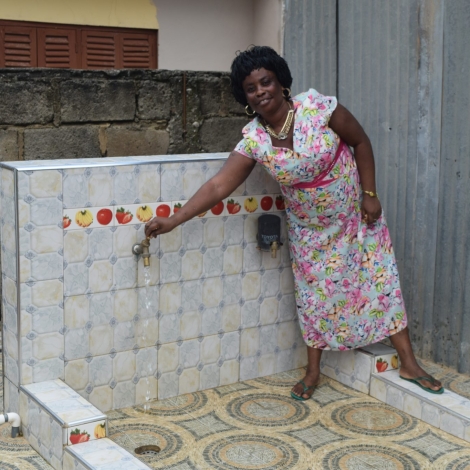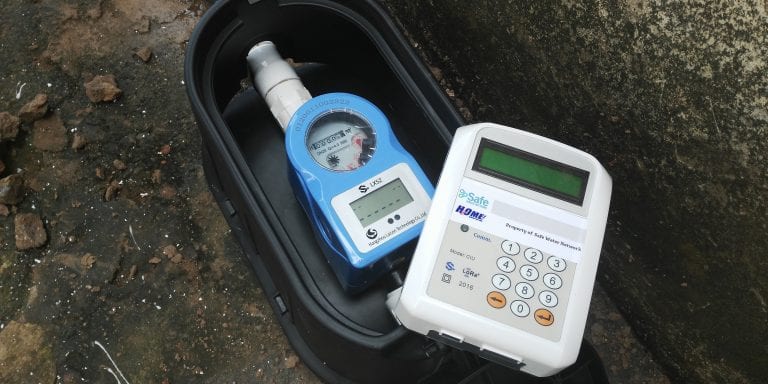Editor’s note: This is the second in a two-part series about lessons learned during Safe Water Network’s experience household connections for water supplies in Ghana. The first article outlines a protocol for plumbing installation: Recommendations for Installing Household Water Connections in Ghana. This second article maps a path to financial sustainability.
Convenience drives water sales in Ghana and India. Other factors play a role, but convenience is key. That’s our conclusion after 10 years of on-the-ground experience and consumer research in the construction and management of water stations through the not-for-profit organization Safe Water Network. To meet our customers’ demand for convenience, we began aggressively building out networks of household connections (HHCs) that bring safe, affordable water from a water station straight to consumers’ homes. Customers no longer have to leave their homes to fetch water from a station. Piping water into the home strengthens the financial viability of a water station. Households with HHCs purchase up to four times more water than those that use our traditional standpipes. The technology also improves the resilience of the water supply to the community.
In the context of water, sustainability and resilience are two concepts receiving increased attention. The spread of the novel coronavirus has underscored the vital role that safe water plays in a society’s overall public health infrastructure. Without a reliable water supply, handwashing with soap is impossible, healthcare facilities cannot provide essential services, and consumers are forced to cluster around limited water points, risking coronavirus infection. Our HHC program predates the coronavirus outbreak, but it is helping our customers protect themselves from infection and reduces their risk of losing access to a water supply. The effect is a demonstration of the interwoven benefits of a sustainable, resilient approach to water access.

Customers review the prepaid water meter interface at a home in Ghana. Photo courtesy of Safe Water Network
With support from the Conrad N. Hilton Foundation, Safe Water Network teamed up with Engineers Without Borders USA to develop an initial protocol for our HHC program in the West African country of Ghana. That work allowed us to determine if the roll-out of larger HHC networks was feasible. An expanded HHC program would require additional investment in the station (to handle the higher volumes) and in water meters. It would also depend on households to pay to connect their compounds to the water main. Before making any investments in the expansion, a number of economic considerations needed to be addressed:
- What is the size of the market for HHCs?
- Can community members afford the initial cost to hook up to the system?
- Are the income levels in the community sufficient to cover increased water supply costs since they will likely be purchasing larger volumes?
The Household Connection Program
As referenced in our previous article, HHCs begin with the installation of a water main. The water service provider needs to run a water main from the central water station to a neighborhood. Then the provider runs connections from the main to the household, each with a meter attached. Safe Water Network pays for the mains and the meters, while the households pay for the piped connections.
At present, a consumer in Ghana pays around (USD) $80 for the connection on average, based on the household’s distance from the water main. Safe Water Network pays for a mobile-money-enabled LAISON Multi-Jet STS prepaid water meter installed with each connection (see below).
Households pre-pay for their water service using a mobile money app that connects to the meter. This tops up the amount of water in their account, and as it is drawn down, the household receives an alert that they need to top it up again.
| Additional Costs | Capital Investment |
| Safe Water Network | Smart meter (~$100 USD) |
| Household | Piped connection (~$80 USD, on average) |
Understanding the Market for HHCs
Before pursuing such a program in Ghana, Safe Water Network needed to understand the realities on the ground. To do this, we enlisted Whitten and Roy Partnership to conduct a market assessment of the areas we intended to service.
“We’re especially excited about this project because Safe Water Network is doing no less than building the utility infrastructure of a country,” said Tyler Roy, General Counsel at Whitten and Roy Partnership. “Villagers in remote areas of Ghana will be able to do something that the vast majority of the world can’t—turn on the tap and drink safe, clean water. The market is ready and people are willing to make investments in bringing water into their homes.” Key findings from the assessment (and our own experiences) showed that:
- The cost of capital for a microloan is quite high—up to 60 percent.
- 45 percent of households can afford the connection charge without taking out a loan.
- In a survey conducted in Tongor, Ghana, we found that 70 percent of households “on-sell” water to more than five neighbors. (However, HHC owners often need training on their costs, so that they can at least break even when on-selling.)
- In an average community, the market for HHCs is ~55 percent, though access could increase with on-selling.
Selling HHCs
We believe HHCs are critical to the long-term success of the water supply in Ghana for two reasons. They allow customers to consume more safe water, and they ensure a sustainable delivery of the water service as providers earn more revenue. To better understand how to enable household purchases of HHCs, we’ve developed two approaches:
- We partnered with water.org, BFA Global (through its Financial Inclusion for Business Runways, or FIBR, project), and the micro-financier VisionFund Ghana to pilot a loan program aimed at testing the viability for consumers to take out loans for HHCs.
- With Whitten and Roy Partnership, we’re developing a comprehensive sales strategy that functions without microfinancing. The strategy includes the training of sales agents, the development of sales materials, and close community engagement (once the coronavirus pandemic diminishes sufficiently).
Sustaining the System after the Initial Investment
An HHC is a substantial investment for households, so we want to make sure they fully use the service. To that end, we’re developing a post-sales strategy focused on ensuring that customers have an excellent experience in managing their water supply. The result, we hope, is that they will continue to purchase water.
Lessons Learned from Digital Finance
Regardless of how the consumer acquires the HHC, a robust digital finance infrastructure helps to reduce our costs and keeps water more affordable for the end user.
Prepaid works, post-paid does not.
We initially implemented a post-paid model for HHCs, where the customer would be billed at the end of the month for water consumed. Many HHC accounts slipped into arrears, as station operators attempted to collect payments from households. The collection realization rate (the percentage of billed fees actually collected) was below 50 percent. That meant that while households were consuming more water, the station was actually losing revenue on HHCs.
To address this issue, we implemented mobile-money-enabled prepaid water meters. Demand fell when these new meters were first installed, but HHC gross margins increased from -8 percent to (positive) 30 percent. The causes of the improvement were a decrease in arrears, an increase in payments against arrears, and an increase in revenues.
Transparency by design can build trust.
Consumers trusted the technology because they could view the balance and mark purchases through the prepaid meters’ LAISON customer interface unit. We learned that customers valued the transparency in their transactions, as opposed to other methods, where consumers may not be able see their balance. Though we found that robust consumer training is needed to realize full financial, operational, and consumer benefits, the prepaid meters improved stations’ financial viability while increasing consumer satisfaction.
Strive for convenience in every aspect of the service.
Not every part of this transition was seamless: the meters’ customer interface originally relied on a lengthy code for the confirmation of transactions, which proved to be inconvenient for our consumers. Fortunately, our insistence on digital solutions ensured that needed changes—in this case, a shorter confirmation code—were made quickly without impacting any of the hardware involved.
Digital finance is key, but customers may need help adopting it.
Digital finance is increasingly seen as a solution to many persistent problems in low-income communities. Especially now, in light of the coronavirus pandemic, when the handling of physical money can pose an actual threat to health. In our experience, the use of mobile money has led to operational efficiency and a more inclusive digital finance ecosystem.
As useful as digital finance will ultimately prove to be, it’s unlikely that this emergent technology is being uniformly adopted around the world, at the same pace. When we first implemented mobile-money-enabled prepaid meters in Ghana, we relied on national mobility statistics, which showed a high penetration of mobile phones and use of digital finance for remittances. But research we subsequently conducted showed that only 10 percent of those in partner communities with a mobile money account had ever initiated a payment.
In an effort to promote the use of mobile money in our partner communities, we collaborated with the country’s leading mobile money provider, MTN Ghana, to conduct educational workshops for consumers.
“MTN MoMo’s partnership with Safe Water Network has seen tremendous value added to the daily lives of people in Ghana,” Eli Hini, the General Manager of MobileMoney Limited, explained. “For instance, our exercise to register rural communities onto the mobile money platform has offered the opportunity to improve the adoption rate and quality of education around the service within these areas whilst promoting the financial inclusion agenda of the country.”

A representative from BFA Global’s Financial Inclusion for Business Runways project interviews a community member on the use of Safe Water Network’s digital finance service. Photo courtesy of Safe Water Network
The future of Safe Water Network’s HHC program
As Safe Water Network continues its expansion of HHCs in Ghana, we’re beginning to understand how far we can push the model. New HHC-optimized water stations continue to come online, and we have begun retrofitting existing stations to take on more connections. The use of mobile money will continue to grow as our educational workshops train more people in its use. While our capacity grows, we are implementing a more focused sales and marketing strategy for an accelerated roll-out. In addition, we’ve teamed up with Envicom Corporation to design a geographic information system (GIS) application and sales-tracking tool that will map our assets, making sales more efficient and providing accurate estimates. This tool will also track our progress with potential customers, the success of sales strategies, and the general time and resources that go into making a sale.
All of these developments are culminating in an exciting next step: a program for a community that achieves maximum HHC capacity, based on our current understanding of how many connections a single water station can accommodate. With funding from the Stone Family Foundation, we are building a station in the village of Nobewam, located in Ghana’s Ashanti Region. Nobewam will serve as a showcase community—one that will demonstrate the upper-capacity limits for household connections in a single community and strengthen financial viability through increased revenue.
As data from Nobewam becomes available, we will track results to see if systems built with sustainability and resilience in mind will ensure that safe water can continue to flow for those who need it most.
About the Author
Jonathan McGrath is the Communications & Engagement Manager at Safe Water Network.


I am really not able to understand the fact that local people have to pay so much money for Water. which is a necessity and not a luxury for survival. Why cant there be a solution where there is one time installation cost for a system and people have access to clean water. Maintenance should be done by the community itself.
Your idea is actually in practice in some places now, especially communities in emerging economies. It has different names, but the gist is that the community owns and manages water and other utilities. They often have help building the infrastructure, as you suggested, and then they learn to organize a community payment or local taxation system to pay for operation, maintenance and repair. The model has strengths and weaknesses, as you can imagine. The model described in this report is a social business that ultimately does the same work and has the same results, more or less, as community ownership. The difference is ideological and also practical, depending on the context of each region. Both models have their fans and detractors. Someone smarter than me might be able to make a conclusive case for one or the other, or some third or fourth model (government-provided utilties, for example) but I haven’t seen that, yet. The author might chime in, too, but those are my thoughts. Thanks for the comment!
– Rob Goodier, News Editor at E4C
Shehab, you raise an interesting point about the necessity of paying for water while serving low-income communities. A useful analogy may be access to food, which is also a necessity for life, and one that requires payment to cover the cost of raising the food, processing it, transporting it, and selling it.
The challenge of water supply is really around the sustainability of the service delivery. Installing a water point is generally straight-forward. However, ensuring an ongoing water service is exceedingly difficult, especially when you include water treatment and distribution. The water sector suffers from a shockingly high failure rate: at any moment, over 30% of rural water systems are non-functional, and that figure is likely to be significantly higher when reliability and water-quality parameters are considered as well.
What Safe Water Network has found is that the crux of sustainability is ensuring that the entire value chain is understood and financed. Under Safe Water Network’s model, the initial costs for the water system are covered by grants or government funding, and the service costs are covered by the customers. This has proven effective, with 100% of Safe Water Network’s systems still operating in Ghana at less than 5% downtime. And interestingly, the water is: affordable to people living on $1/day; is on par with government tariffs; and is much less expensive than what informal vendors charge.
Having said that, Safe Water Network continually looks for ways to keep water affordable, despite high inflation rates. Whether it’s switching to solar power, utilizing digital finance, or implementing remote monitoring, there are ways to improve the financial performance of a water enterprise without requiring an increase in the price of water.